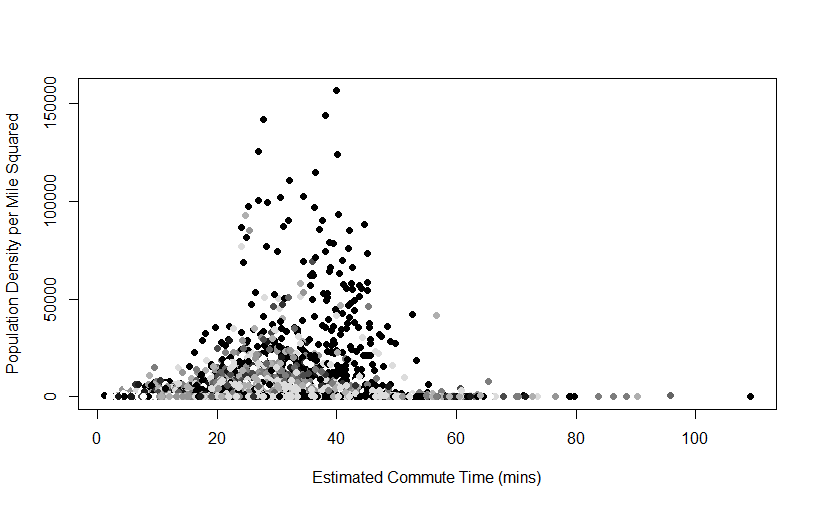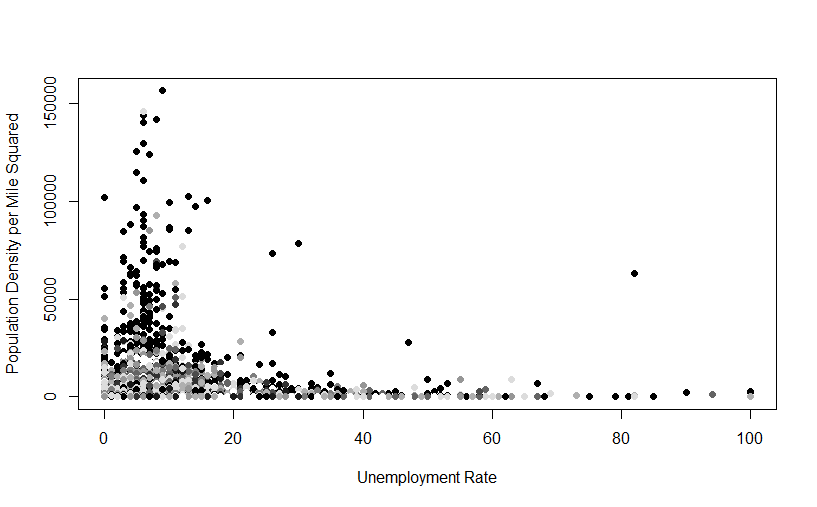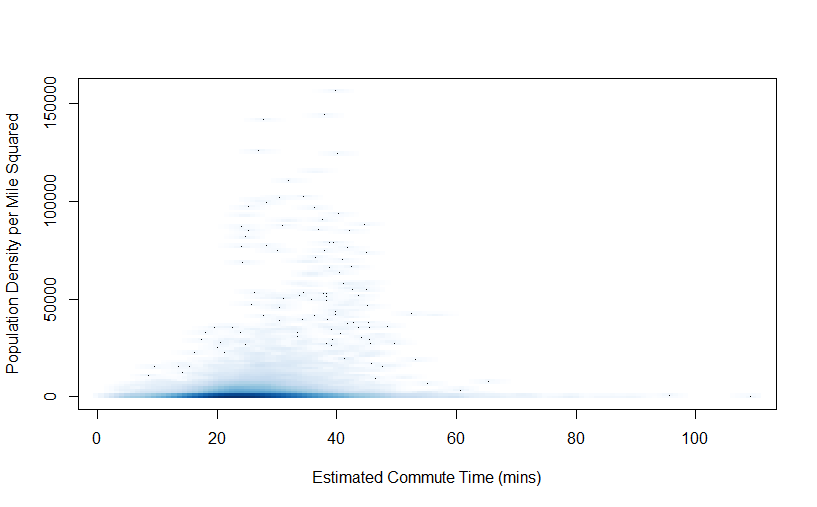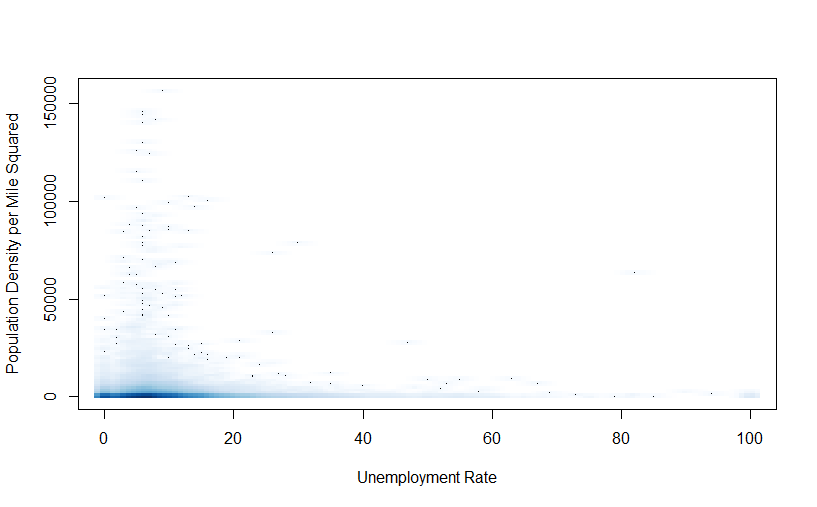[WIP] Optimizing Cities: The Effects of Population Density
- Jackson

- Sep 26, 2018
- 1 min read
Updated: Dec 29, 2021
This was a project I worked on for a statistical programming class I took years ago. Here are some charts (all made with R). The writing is also straight out of sophmore year, so no promises about quality.
In this dataset I compared Population Density of each zipcode to the average Commute Time and Unemployment Rate in that zipcode. For Commute Time, there is an exponential trend, meaning that the larger the density, the smaller the change in commute time is when density is changed. For example, introducing a city's density onto a farming village will increase commute times substantially, but introducing Manhattan-level density to a city like Boston will only slightly increase commute times. This suggests that, for city planners looking to increase density, they will benefit from the ever smaller increases in commute time.
The trend of unemployment is even more clear. As density increases, unemployment decreases. This is likely because of the greater availibility of jobs in cities, giving people more opportunities and making it harder for companies with monopolies on small-town jobs to shut out certain people. Cities are clearly beneficial in this way.
As an extra detail, the color of each data point corresponds to the Caucasian racial homogeny of the zip code, a darker color corresponding to a greater proportion of other races. Denser cities tend to have more racial diversity because they were hotspots for immigration in the 20th century.










Comments